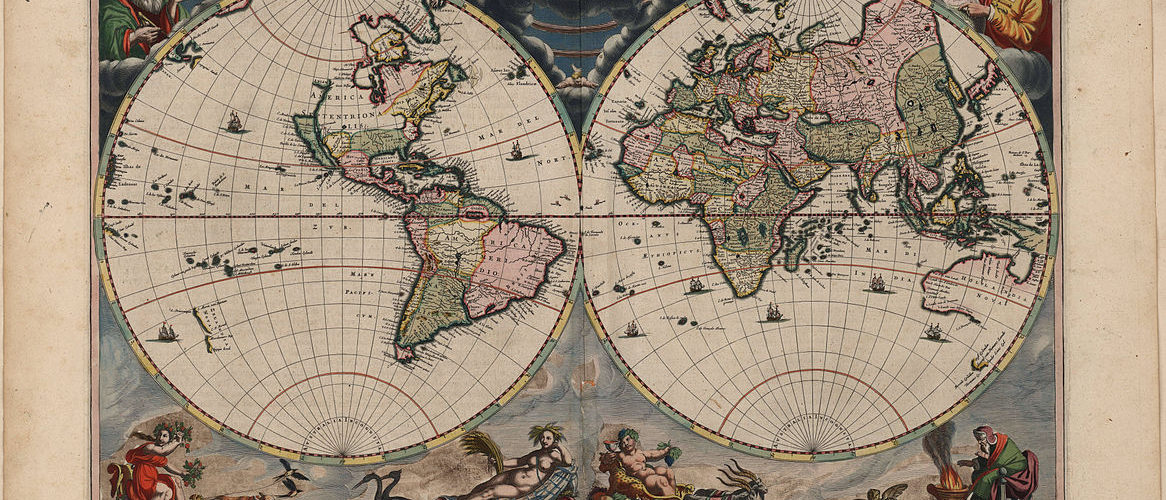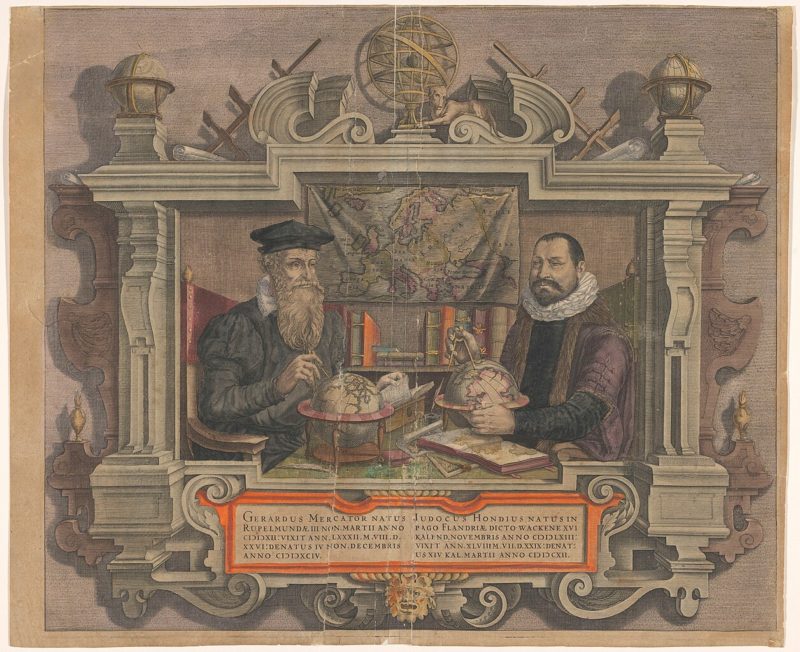Art in Cartography, Cartography in Art: Contemporary and Antique Maps

Beautiful antique maps are just as valued by collectors and historians as paintings and sculptures. Centuries ago, before humans developed new ways of recording the curves of the Earth, maps used to be hand-drawn. Cartographers were scientists and had to be highly educated to represent reality as faithfully as possible. But were those people artists?
Are antique maps art?
One can argue that an artist is someone who creates with the intention of making art and expressing their creativity. By this logic, most cartographers could not be considered artists because they did not see what they did as art. Ancient and pre-modern cartographers aimed to depict the real world, not showcase their artistic vision. This is true for a huge period of the history of cartography around the world. However, around the Middle Ages, things started to change in Europe. The clergy, who made most of the maps back then, often added depictions of mythical creatures and religious symbols for decoration.
However, Medieval maps cannot compare to the opulent and detailed decorations of their 17th-century successors. This was when maps were viewed not only as tools for navigation but also as precious things worth collecting. Wealthy people kept their treasured possessions in atlases, just like contemporary collectors of antique maps. Renaissance was also the period when lithography was invented and actively used in cartography, which consequently led to the appearance of more colorful designs.
Contemporary maps are not always maps
The people of today do not see maps as untouchable treasures that need to be tucked away in albums and atlases. While hand-painted antique maps are still sought-after, they are only used as decor objects or collectibles. Most people are satisfied with having an app on their phone for navigation. However, contemporary artists found a different use for cartography by reimagining maps and using the centuries-old form to tell their personal stories.
Today, maps in art have become a tool to explore imaginary worlds, confront trauma, reframe experiences, and evoke a strong emotional response. While Coriette Schoenaerts’ maps made from piles of clothes shaped like continents make people laugh, Melissa Gould’s series drawn in a child-like naive style provokes a discussion about boyhood and violence.
So, are maps art?
Since the beginning of time, maps have reflected people’s knowledge and beliefs about the world, as well as their curiosity, fears, and anxieties. And isn’t that just what art does? Creativity has always been in cartography, and as the definition of art changes through time, it is only fair that it expands to include this ancient craft.

